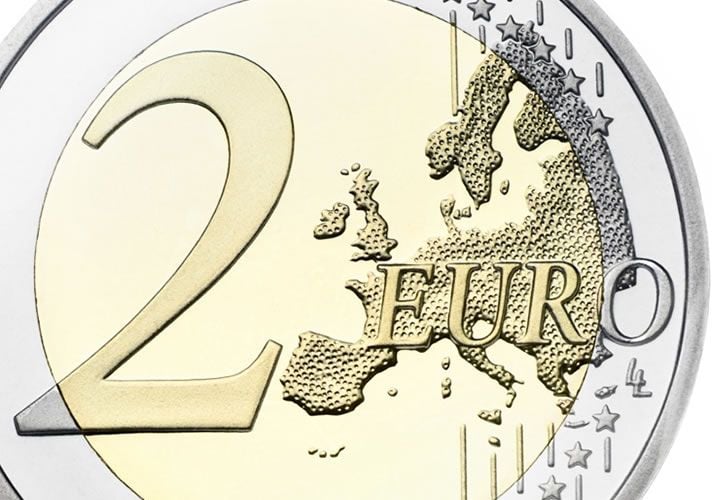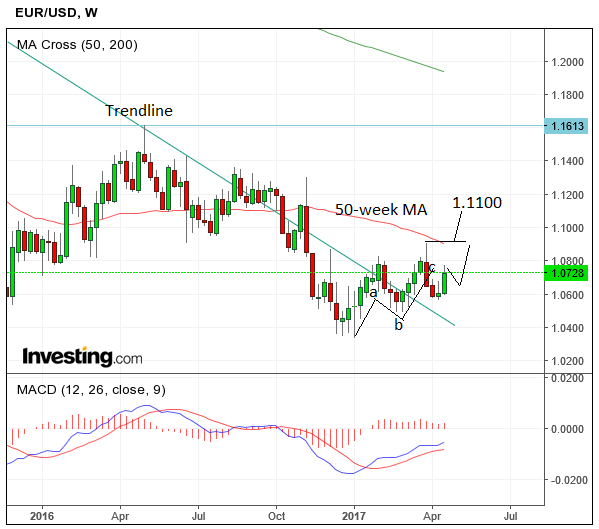The Euro to US Dollar Rate's Forecast for Next Five Days

With the start of a new trading week, we take stock of the EUR/USD exchange rate and discuss possible options for its evolution.
EUR/USD has broken above a long-term trendline, and this break is key for the outlook as it increases the chance the exchange rate will drive higher - but crucially only if it can break above the existing 1.0909 highs.
The pair has pulled back from the December 2016 lows in a three wave a-b-c correction and in the process pierced the major trendline.
A move above the 1.0909 highs would establish a new sequence of rising peaks and troughs and this significant structural change would increase the possibilities of a continuation higher.
If such a move happens we would expect it to successfully break above the 50-day moving average at 1.0910 up to an initial target at 1.1100, where a major pivot line sits presenting the exchange rate with an obstacle to further upside.
Shorter-term there is a possibility the exchange rate will stall and consolidate - for example in the coming week - but the bias longer-term is higher.

Key Data in the Coming Week
For the Dollar: the big release this week will be first Quarter GDP on Friday, (13.30 GMT) which is expected to show a slowdown to a 1.1% rise quarter-on-quarter from 2.1% in Q4.
On Thursday there are Durable Goods Orders and the Goods Trade Balance, whilst on Tuesday Housing data, including the Case-Schiller Index and New Homes Sales are up for release at 15.00, however, none of these are likely to have the impact of Friday’s Q1 GDP estimate, unless they produce significant outliers.
For the Euro: bar the results from the first round of the French election out tonight, the European Central Bank Meeting to set interest rates and policy on Thursday (12.45 GMT) is the highlight of the week, even though commentators do not generally expect any changes to policy at such a sensitive time (so close to the French Election).
FX guru Kathy Lien suggests the ECB may be more upbeat in its assessment, prompting some sort of recovery in the Euro:
“Since the last monetary policy meeting we have seen widespread improvements in the labour market, consumer spending and economic activity.”
The latest Eurozone inflation data, meanwhile, will be released on Friday April 28 at 10.00, and is forecast 1.8% year-on-year in April - that is compared to April 2016.
Save
Save
